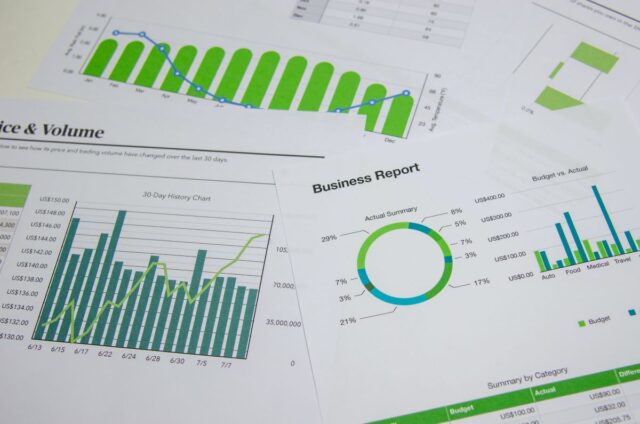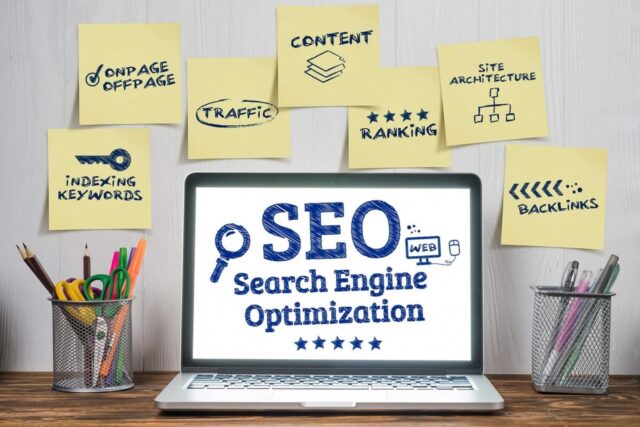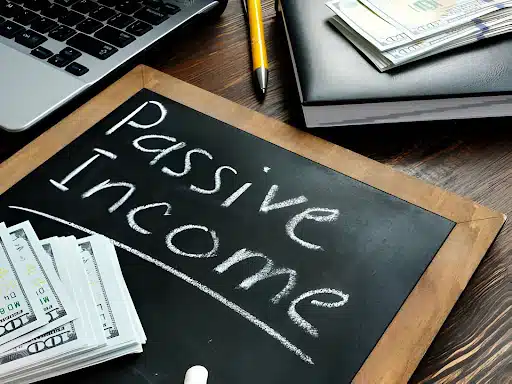What Are Common SEO Mistakes to Avoid and How to Fix Them?

Search engine optimization (SEO) is an essential part of running a successful website or blog. However, many webmasters and bloggers make common SEO mistakes that can cause their websites to be penalized by search engines or even completely removed from their search engine results. Today we will discuss some common SEO mistakes that should be avoided, as well as provide information to take to fix them. By following these tips, you will be able to ensure your website is properly optimized and performing at its best.
Boost Your Website’s Ranking: Avoiding Common SEO Mistakes and Maximizing Potential

1. Not Optimizing Page Titles
One of the biggest SEO mistakes you can make is not optimizing your page titles. The title tag is one of the most important on-page SEO elements and is used by search engines to understand what your webpage is about. To avoid this mistake, ensure that each page on your website has a unique and descriptive title that includes relevant keywords. Use 50-60 characters for the title to ensure that it is not cut off in search results. You can also include your brand name in the title, but it is better to place it at the end. By optimizing your page titles, you increase your chances of ranking higher in search results and driving more traffic to your website.
2. Not Optimizing Meta Descriptions
Another common mistake in SEO is not optimizing meta descriptions. A meta description is the summary of a webpage that appears below the page title in search engine results. It’s a great opportunity to entice potential visitors to click on your link. However, some people ignore this crucial element and leave the default text or a vague description, missing the chance to grab attention and increase click-through rates. To fix this mistake, ensure that every meta description is unique, concise, and includes relevant keywords. Write an attractive summary that highlights the main purpose of the page, and include a clear call-to-action to encourage clicks.
3. Not Optimizing Images
Images can add visual interest to your website and help convey your message, but they can also impact your SEO. Not optimizing your images means missing out on opportunities to improve your search rankings and drive traffic to your site.
Some common mistakes include not using descriptive filenames or alt tags, using large images that slow down your site’s loading speed, and using images that are not relevant to the content on the page. To fix these issues, make sure to use descriptive and relevant filenames, include alt text that accurately describes the image, and compress your images to optimize loading speed. By doing so, you can enhance your website’s SEO and user experience.
4. Not Optimizing Headings
Headings are an essential part of website structure and hierarchy, and they help search engines understand the content on the page. Not optimizing headings is a common SEO mistake that can impact your website’s visibility in search engine results. To optimize headings, use H1 tags for the page title and H2 tags for section headings. Use relevant keywords in the headings to make it clear what the content is about. Also, avoid using multiple H1 tags on a single page as it confuses search engines and dilutes the importance of each heading. To use proper headings, ensure they are formatted correctly with clear font size and spacing. Optimizing your headings can help search engines understand the structure of your content, improving the chances of ranking higher in search results.
5. Not Optimizing Alt Text
Alt text, also known as alternative text, is an important aspect of search engine optimization (SEO) that is often overlooked. Alt text is a descriptive text that is used to describe the contents of an image to search engines and visually impaired users who use screen readers. Not optimizing alt text is a common mistake that can negatively impact your website’s SEO efforts. When alt text is not optimized, search engines may have difficulty understanding the contents of your images, which can lead to lower rankings in search results. Additionally, visually impaired users may have a less-than-ideal experience on your website if the alt text is not descriptive enough.
To optimize alt text, you should aim to provide accurate and descriptive information about the contents of your images.
This can include information about the subject matter, colors, shapes, and other relevant details. It’s important to keep in mind that alt text should not be used as an opportunity to stuff keywords, as this can be seen as spammy and may result in penalties from search engines. Instead, focus on providing useful and meaningful information that will help both search engines and users understand the contents of your images.
Another common mistake when it comes to alt text is not providing alt text for all images on your website.
While it may be tempting to skip alt text for images that are purely decorative or are used for formatting purposes, it’s important to remember that search engines can’t “see” your images and rely on alt text to understand what they contain. Additionally, visually impaired users may rely on alt text to understand the contents of your website. Therefore, it’s important to provide alt text for all images, even if they are purely decorative or used for formatting purposes.
Not optimizing alt text can be a costly mistake when it comes to SEO.
To avoid this mistake, make sure to provide accurate and descriptive alt text for all images on your website, and avoid keyword stuffing or skipping alt text for decorative or formatting images. By doing so, you’ll help both search engines and users understand the contents of your website and improve your chances of ranking higher in search results.
6. Not Optimizing Webpages for Mobile

With the rise of mobile internet usage, it’s crucial to optimize your website for mobile devices. Neglecting to do so could cause your website to rank lower on search engines and result in a poor user experience for mobile users. One common mistake is failing to implement responsive design, which adapts your website’s layout to fit the screen size of the user’s device. This means avoiding large images or videos that may slow down page load times. Additionally, consider simplifying your navigation menu and minimizing the need for scrolling. By optimizing your web pages for mobile, you’ll improve your SEO efforts and provide a seamless experience for your mobile users.
7. Not Creating Enough Content
One of the most common mistakes businesses make is not creating enough content. Your website needs to have a lot of quality content for search engines to crawl and rank. This doesn’t mean that you need to create new pages every day, but you need to keep adding new and relevant content to your website. A great way to create more content is by adding a blog to your website and consistently publishing blog posts. You can also add product pages, case studies, and whitepapers. By creating quality content, you’re not only giving search engines more to crawl, but you’re also giving your audience more valuable information.
If you’re struggling to come up with content ideas, try to put yourself in your customers’ shoes and think about what they might be interested in. Conducting keyword research can help you identify popular topics and trends in your industry. So creating enough content is crucial for a successful SEO strategy. Aim to consistently add quality content to your website, and you’ll see the benefits in your search rankings and traffic.
8. Not Promoting Content
One of the biggest SEO mistakes is not promoting your content. Just creating content is not enough; you need to actively promote it to reach your target audience and get backlinks. Social media is a powerful tool for promoting content, but don’t overlook other channels like email marketing, guest blogging, and influencer outreach. Engage with your followers and encourage them to share your content. Be sure to use relevant keywords and hashtags to increase visibility. By actively promoting your content, you increase its chances of being seen and shared, leading to better search engine rankings and increased traffic to your site.
9. Not Measuring Result
One of the biggest mistakes that many website owners make is failing to measure their SEO results. Measuring results is crucial in understanding what works and what doesn’t work for your website. Without tracking your SEO progress, it is difficult to make informed decisions about how to improve your website’s performance.
Google Analytics is a powerful tool that can help you track your SEO progress. By analyzing your website’s traffic, you can identify which pages are performing well and which ones need improvement. You can also see which keywords are bringing traffic to your website, which can help you optimize your content for better rankings. To measure your SEO results, make sure you have set up Google Analytics on your website. Regularly review your analytics data and make adjustments to your SEO strategy as needed. By doing so, you can ensure that your website is continuously improving and driving more traffic to your business.
Boost Your SEO Ranking with These Simple Website Speed Optimization Tips
Slow site speed can negatively impact your SEO rankings and user experience. Here are some effective ways to improve website speed:

1. Minimize HTTP requests by reducing the number of elements on your site, such as images, scripts, and plugins.
By reducing the number of HTTP requests, web developers can help improve the performance and user experience of their site, particularly on slower connections or devices.
2. Enable compression to reduce your file size and improve website loading speed.
Enabling compression can significantly reduce the file size of your website’s resources, such as HTML, CSS, and JavaScript files. This can improve your website’s loading speed, as smaller files can be downloaded faster.
3. Optimize your images by compressing and reducing the size without losing quality.
This can be done by compressing the images, using appropriate file formats, and resizing them to the optimal dimensions for your website.
4. Use a Content Delivery Network (CDN) to deliver your website’s content across multiple servers, reducing load times for users in different locations.
Minimize server response times by choosing a reliable hosting provider and optimizing your server resources.
5. Reduce redirects and fix broken links to avoid delays and improve user experience.
By minimizing the use of redirects and fixing broken links, you can reduce delays and improve the overall user experience.
6. Enable browser caching to reduce load times for repeat visitors.
Browser caching allows repeat visitors to your website to load pages faster by storing certain resources on their device. This means that the resources do not need to be downloaded again, resulting in faster loading times.
7. Use lightweight themes or templates and reduce the number of external scripts and plugins.
By improving site speed, you can not only improve SEO rankings, but also improve user experience and increase your website’s conversion rate.
Increase Your Website’s Authority and Improve Your SEO with These Backlinking Strategies
Backlinks are essential for improving your website authority and search engine ranking. Here are some best practices for building high-quality backlinks:

1. Focus on creating relevant and informative content to naturally attract backlinks.
This can be achieved by conducting research and producing unique, informative and valuable content for your target audience. It is important to optimize your content for search engines, so that it is more likely to be found and shared by others.
2. Reach out to industry influencers and thought leaders in your field and ask them to link to your content.
You can reach out to them through social media, email, or other communication channels and ask them to share your content with their followers.
3. Participate in online forums, blogs, and social media groups relevant to your niche and include a link to your website in your comments or posts.
Participating in online forums, blogs, and social media groups relevant to your niche can help you build relationships with others in your industry and increase your website’s visibility. By including a link to your website in comments or posts, you can drive traffic to your website and potentially get backlinks from others.
4. Take advantage of broken link building by finding broken links on high authority sites and offering your own content instead.
Guest post on high authority sites in your niche and include a link to your site in your author bio.This can be a great way to earn backlinks, as it provides value to the site owner by replacing a broken link with a working one. Guest posting on high authority sites in your niche is also a great way to earn backlinks and establish yourself as an authority in your field.
5. Use internal linking to link to other relevant pages on your site and improve user experience.
This can improve user experience by helping visitors find other relevant content on your site, and can also help search engines understand your site structure and hierarchy.
6. Avoid spammy link building practices such as buying links, using link farms, or participating in affiliate programs.
Unwanted link building activities, such as buying links or participating in link farms, can damage your site’s reputation and lead to penalties from search engines. The key is to focus on building relevant, high-quality backlinks rather than using manipulative tactics that can backfire in the long run.
By following these best practices, you can build high-quality backlinks that not only improve your SEO rankings, but also drive more traffic to your site and increase brand credibility in your niche.
CONCLUSION
Building high-quality backlinks is an important aspect of SEO that can help improve your website’s visibility and credibility. By creating relevant and informative content, reaching out to influencers and thought leaders, participating in online communities, and using internal linking, you can earn valuable backlinks and improve the user experience on your site. However, it’s important to avoid spammy link building practices that can harm your site’s reputation and instead focus on building relevant, high-quality backlinks.








4 thoughts on “What Are Common SEO Mistakes to Avoid and How to Fix Them?”
Comments are closed.